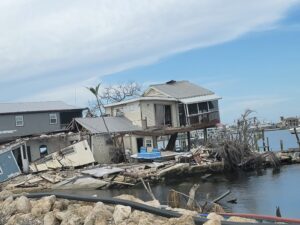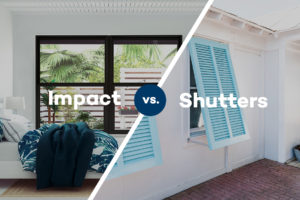A lot can happen in a year. Whether your family has recently grown, you’re now a caregiver with children in the home, or perhaps friends have children who may visit your home, it’s essential to consider the safety of your windows. This is the perfect week to evaluate your home and determine if there are safety risks for the little ones in your life. When it comes to the risk of injury or falls, the Window Safety Task Force recommends the following:
- RULES: Setting and enforcing rules that prevent children from playing near windows and lanai / patio doors can prevent them from falling through a screen, open window, or being cut from broken glass.
- FURNITURE: Ensure furniture, or anything a child can climb, is away from windows and doors. Children could use these objects to climb to an open window or potentially fall off and break the glass.
- LOCKS: Keeping windows closed and locked not only protects you from would-be intruders but also prevents injury to children. If opening a window for ventilation, ensure a child cannot reach it.
- SAFETY DEVICES: Install a Window Opening Control Device that is ASTM F2090 certified to limit how far a window can be opened. PGT offers these devices on the following windows:
- ClassicVue Max™ Aluminum Single Hung Window SH7600A
- ClassicVue Max™ Aluminum Horizontal Roller Window HR7610A
- WinGuard® Aluminum Single Hung Window SH7700A
- WinGuard® Aluminum Single Horizontal Roller Window HR7710A
- EnergyVue® Vinyl Single Hung Window SH5400
- EnergyVue® Vinyl Horizontal Roller Window HR5410
- EnergyVue® Vinyl Casement Window CA5440
- WinGuard® Vinyl Single Hung Window SH5500
- WinGuard® Vinyl Horizontal Roller Window HR5510
- WinGuard® Vinyl Casement Window CA5540
Window Safety for Emergencies
It’s also important to consider how your windows could assist your family in making it to safety in case of an emergency. Consider the following if you are in a situation where you must escape your home:
- FUNCTIONALITY: Make sure that your windows are not painted or nailed shut and can easily be opened. Being able to open them to escape in an emergency quickly is essential.
- ACCESSIBILITY: Ensure window air conditioners, or other objects, are not installed where they may prevent escape or rescue in an emergency. Always be sure that you have at least one window in each sleeping and living area that meets local code requirements for escape and rescue.
- SECURITY: Some homes may have window guards, security bars, grilles, or grates already covering their windows. These windows can prevent emergency escape and rescue if the devices on them do not have a functioning release mechanism that complies with ASTM F2090.
- PRACTICE: Entry doors serve as the primary exits from a home. Windows provide an alternative means of escape from a burning house or other emergencies. Determine your family’s emergency escape plan and practice it. Here’s a fun activity book to get the whole family involved in creating an emergency exit plan.
Ensuring the safety of your home and the homes of those you love is the goal of Window Safety Week. After going through this list at your house, consider sharing this article or The National Safety Council’s Window Safety Checklist with relatives and friends.




